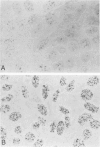Abstract
DNA strand break in HeLa cells induced by radiation was detected using the in situ nick translation method. The cells were exposed to radiation of 3, 6, 12, 18, and 24 Gy in Lab-Tek tissue culture chamber/slides and were fixed with ethanol/acetic acid on the slide glass. The break sites in DNA were translated artificially in the presence of Escherichia coli DNA polymerase I and [3H]-labeled dTTP. Autoradiographic observation was made of the level of break sites in the DNA. The DNA strand break appeared even with a 3 Gy exposure, increased 8.6 times at 24 Gy compared with the control cells, and this level correlated reciprocally to change in cell viability. This nick translation method provides a rapid in situ assay for determining radiation-induced DNA damage of cultured cells, in a semi-quantitative manner.
Full text
PDF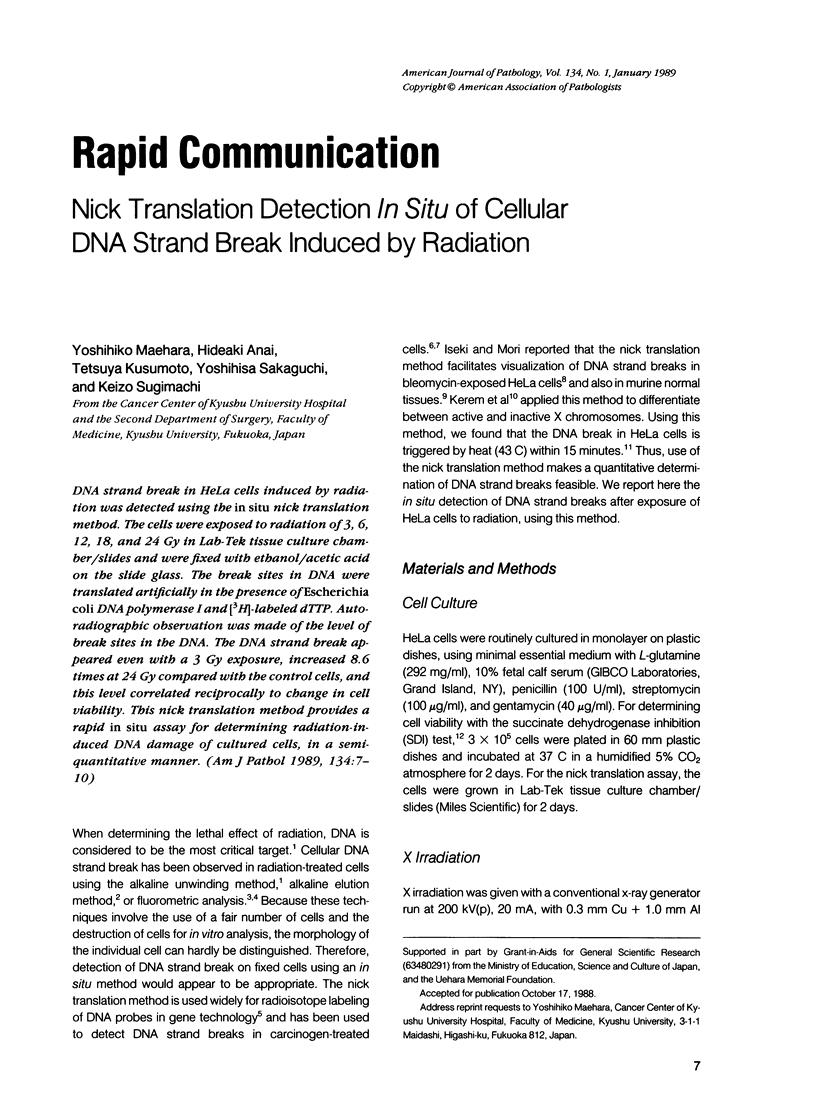
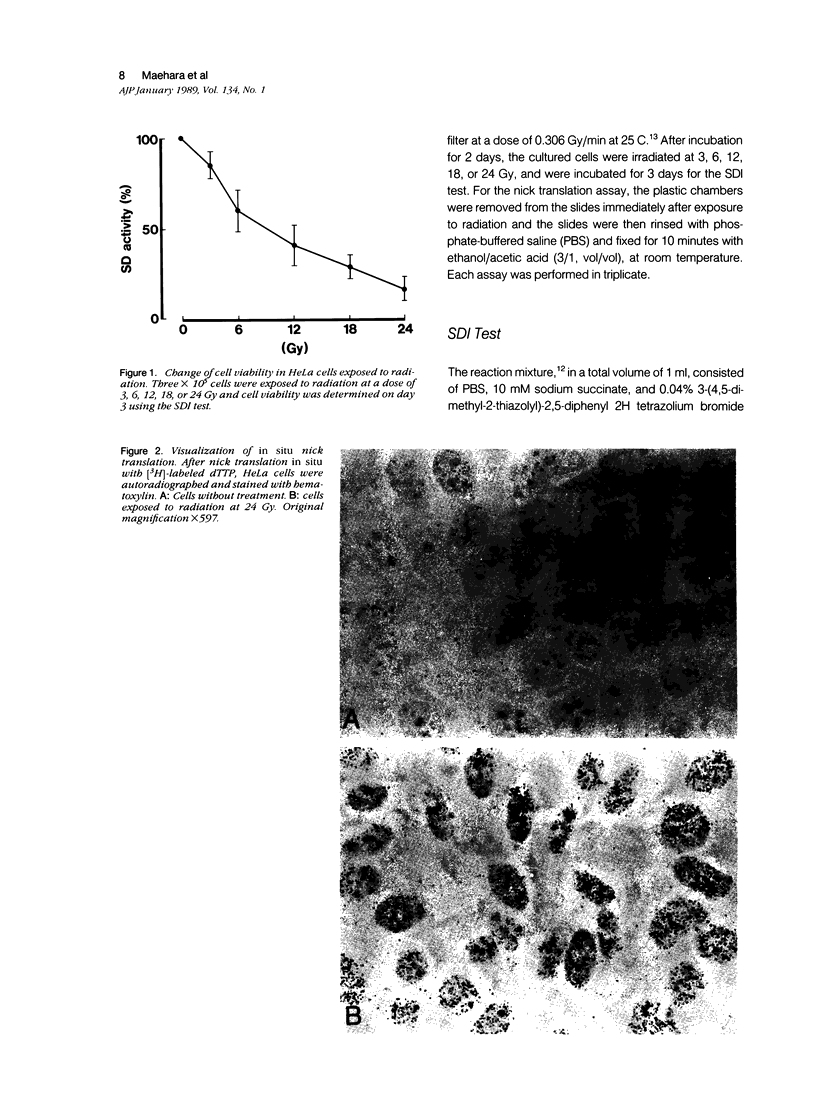
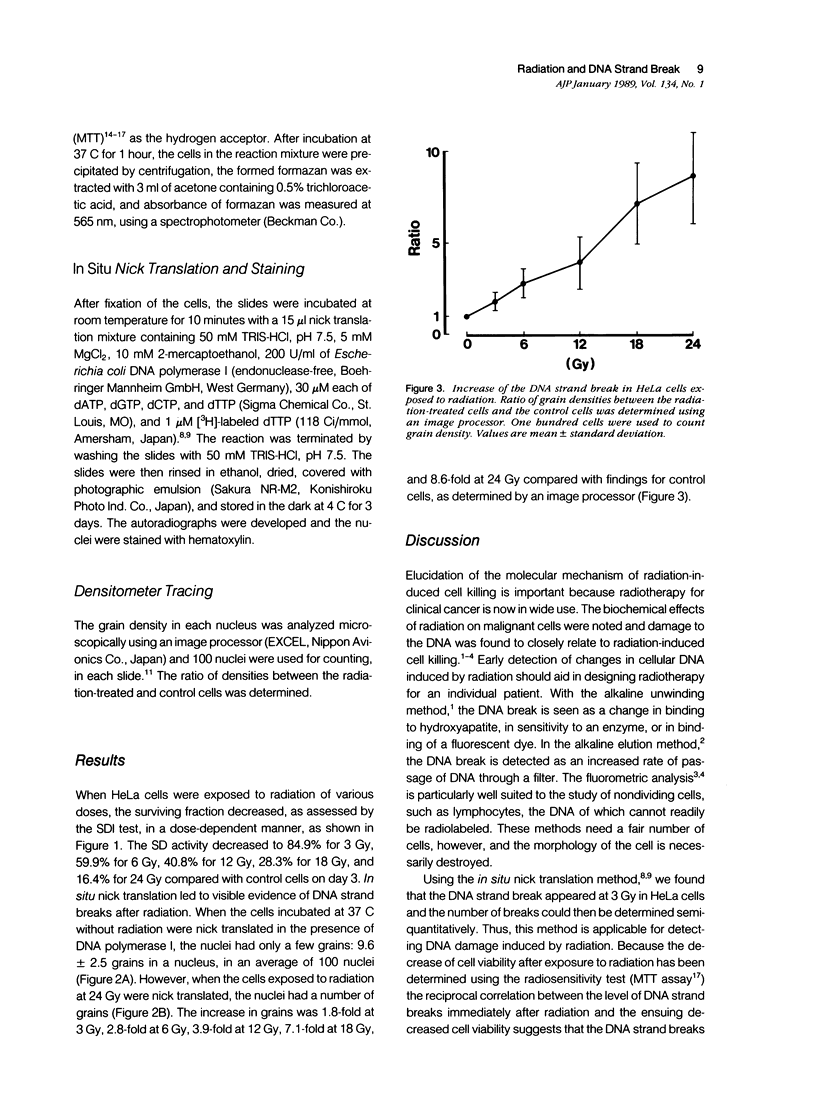
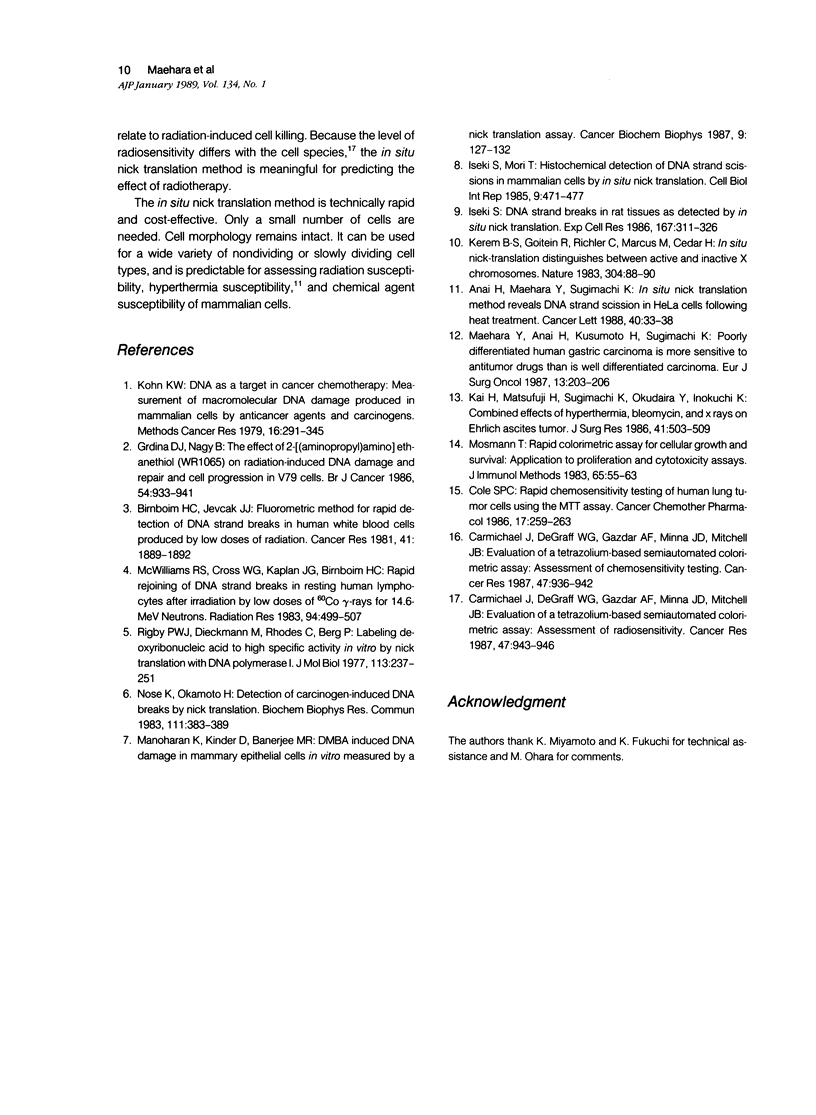
Images in this article
Selected References
These references are in PubMed. This may not be the complete list of references from this article.
- Anai H., Maehara Y., Sugimachi K. In situ nick translation method reveals DNA strand scission in HeLa cells following heat treatment. Cancer Lett. 1988 May;40(1):33–38. doi: 10.1016/0304-3835(88)90259-5. [DOI] [PubMed] [Google Scholar]
- Birnboim H. C., Jevcak J. J. Fluorometric method for rapid detection of DNA strand breaks in human white blood cells produced by low doses of radiation. Cancer Res. 1981 May;41(5):1889–1892. [PubMed] [Google Scholar]
- Carmichael J., DeGraff W. G., Gazdar A. F., Minna J. D., Mitchell J. B. Evaluation of a tetrazolium-based semiautomated colorimetric assay: assessment of chemosensitivity testing. Cancer Res. 1987 Feb 15;47(4):936–942. [PubMed] [Google Scholar]
- Carmichael J., DeGraff W. G., Gazdar A. F., Minna J. D., Mitchell J. B. Evaluation of a tetrazolium-based semiautomated colorimetric assay: assessment of radiosensitivity. Cancer Res. 1987 Feb 15;47(4):943–946. [PubMed] [Google Scholar]
- Cole S. P. Rapid chemosensitivity testing of human lung tumor cells using the MTT assay. Cancer Chemother Pharmacol. 1986;17(3):259–263. doi: 10.1007/BF00256695. [DOI] [PubMed] [Google Scholar]
- Grdina D. J., Nagy B. The effect of 2-[(aminopropyl)amino] ethanethiol (WR1065) on radiation-induced DNA damage and repair and cell progression in V79 cells. Br J Cancer. 1986 Dec;54(6):933–941. doi: 10.1038/bjc.1986.264. [DOI] [PMC free article] [PubMed] [Google Scholar]
- Iseki S. DNA strand breaks in rat tissues as detected by in situ nick translation. Exp Cell Res. 1986 Dec;167(2):311–326. doi: 10.1016/0014-4827(86)90172-2. [DOI] [PubMed] [Google Scholar]
- Iseki S., Mori T. Histochemical detection of DNA strand scissions in mammalian cells by in situ nick translation. Cell Biol Int Rep. 1985 May;9(5):471–477. doi: 10.1016/0309-1651(85)90155-9. [DOI] [PubMed] [Google Scholar]
- Kai H., Matsufuji H., Sugimachi K., Okudaira Y., Inokuchi K. Combined effects of hyperthermia, bleomycin, and X rays on Ehrlich ascites tumor. J Surg Res. 1986 Nov;41(5):503–509. doi: 10.1016/0022-4804(86)90168-x. [DOI] [PubMed] [Google Scholar]
- Kerem B. S., Goitein R., Richler C., Marcus M., Cedar H. In situ nick-translation distinguishes between active and inactive X chromosomes. Nature. 1983 Jul 7;304(5921):88–90. doi: 10.1038/304088a0. [DOI] [PubMed] [Google Scholar]
- Maehara Y., Anai H., Kusumoto H., Sugimachi K. Poorly differentiated human gastric carcinoma is more sensitive to antitumor drugs than is well differentiated carcinoma. Eur J Surg Oncol. 1987 Jun;13(3):203–206. [PubMed] [Google Scholar]
- Manoharan K., Kinder D., Banerjee M. R. DMBA induced DNA damage and repair in mammary epithelial cells in vitro measured by a nick translation assay. Cancer Biochem Biophys. 1987 May;9(2):127–132. [PubMed] [Google Scholar]
- McWilliams R. S., Cross W. G., Kaplan J. G., Birnboim H. C. Rapid rejoining of DNA strand breaks in resting human lymphocytes after irradiation by low doses of 60Co gamma rays or 14.6-MeV neutrons. Radiat Res. 1983 Jun;94(3):499–507. [PubMed] [Google Scholar]
- Mosmann T. Rapid colorimetric assay for cellular growth and survival: application to proliferation and cytotoxicity assays. J Immunol Methods. 1983 Dec 16;65(1-2):55–63. doi: 10.1016/0022-1759(83)90303-4. [DOI] [PubMed] [Google Scholar]
- Nose K., Okamoto H. Detection of carcinogen-induced DNA breaks by nick translation in permeable cells. Biochem Biophys Res Commun. 1983 Mar 16;111(2):383–389. doi: 10.1016/0006-291x(83)90317-0. [DOI] [PubMed] [Google Scholar]
- Rigby P. W., Dieckmann M., Rhodes C., Berg P. Labeling deoxyribonucleic acid to high specific activity in vitro by nick translation with DNA polymerase I. J Mol Biol. 1977 Jun 15;113(1):237–251. doi: 10.1016/0022-2836(77)90052-3. [DOI] [PubMed] [Google Scholar]



